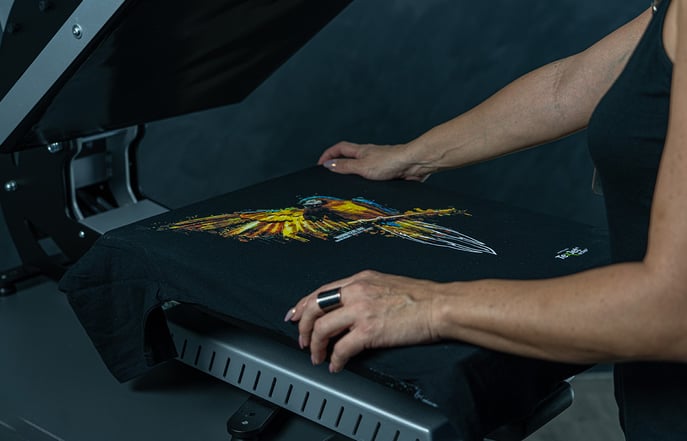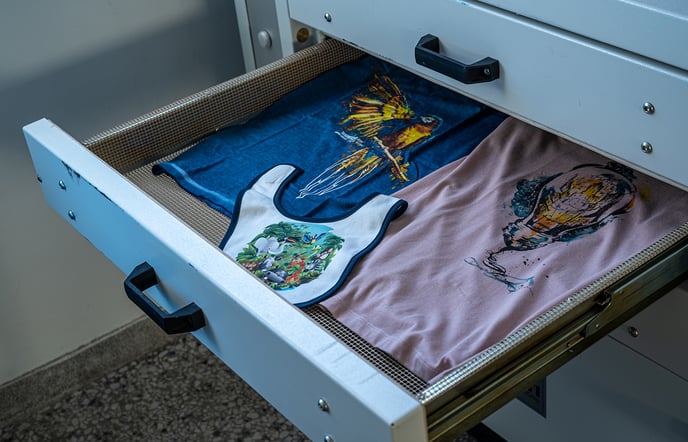Learn how to make the right choice about the DTG curing equipment you will need.
For drying the pretreatment layer or curing your print's inks, you can opt between a heat press or an oven dryer. Before making your choice, you should take notice of the ink's specifications you are about to use. Specifically, you should check if they are compatible with a heat press or oven curing or both. Each machine offers different benefits and is better compatible with your business type.
In order to find out whether or not the equipment is suitable for you, read about their main advantages below:
Benefits of using a heat press
- When you have limited space on your working station a heat press is ideal for you. This machine occupies only a small area without overcrowding.
- If you aim for a small to medium production volume, the use of a heat press will allow you to achieve satisfactory results, as far as time management is concerned.
- Setting up a heat press at the desired temperature and time can be achieved within minutes.
- When using a heat press, the pressure applied can be modified to your needs. The pressure is an important factor that helps the vertical fibers to be held down, providing a flat surface for smooth ink coverage. This way, the print has a softer touch and is shinier.
- A hovering option is available which simulates the oven dryer effect. This feature is mainly used for fabrics that are sensitive to heat and may be damaged if they come in direct contact with the presses’ hot surface.
- Rule of thumb: When a heat press is used for fixation, the times are shorter and in some cases, even cut in half in comparison to the oven dryer.
- Generally, a heat press is more of an economic investment, as opposed to an oven dryer.
If you are interested in a heat press for curing your prints, then get to know more about its proper use:
How to dry the pretreatment liquid when using a heat press?
How to cure a print when using a heatpress
Why and how to use curing parchment sheet paper in DTG printing
Benefits of using an oven dryer

- The oven dryer offers a larger space for the fixation of bigger prints. In the case of a heat press, you need to cure the print in turns, due to its limited surface.
- Having an oven dryer at your workstation can boost your production, as you can cure multiple prints at once, in just one heat drawer. That means saving time and effort!
- When using an oven dryer there is no need for extra consumables, such as protective paper, meaning you have no extra costs.
- Oven dryers are the most suitable choice when it comes to screen printing. In order for the paste to dry successfully and stabilize, the air flow that these ovens provide help to achieve optimum results.
- The oven dryers lack the pressure feature. As mentioned, the pressure holds down the vertical fibers providing a flat surface. For this reason, if the print is cured in an oven dryer has more texture and it’s a bit rougher to the touch. Many consider this a drawback, but it's up to you to decide what character your prints should have!
- Sometimes, the printing time can be shorter than the curing time, meaning that while you cure the last printed fabric, the next one will be printed and that one will also need curing. In this case, the use of a single heat press will not be sufficient, as it can cure one garment per time. This is where an oven dryer comes in handy, which gives you the ability to cure multiple fabrics at once.
- One major advantage of oven dryers is that they leave no compression marks, in contrast with a heat press, which can possibly create a “box” mark around the print.
If a dryer seems a better choice for your business, then get to know more about its proper use:
How to dry the pretreatment liquid when using a tunnel dryer?
-1.png?height=120&name=Polyprint%20Logo%20(Dark)-1.png)